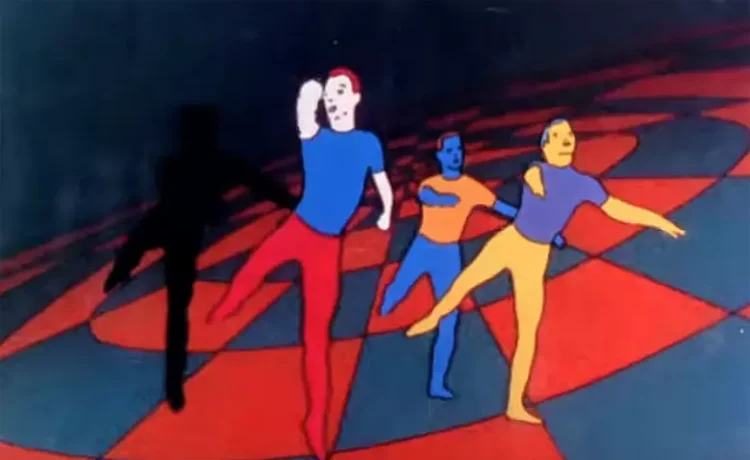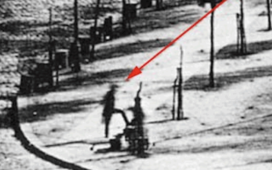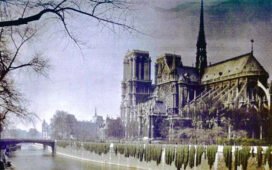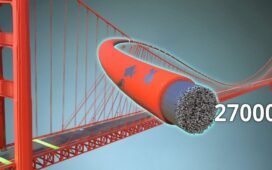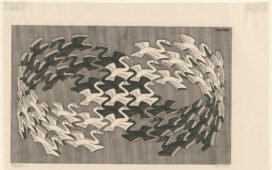You could argue that, of all rock bands, that Pink Floyd had the least need for visual accompaniment. Sonically rich and evocatively structured, their albums evolved to offer listening experiences that verge on the cinematic in themselves. Yet from fairly early in the Floyd’s history, their artistic ambitions extended to that which could not be heard. Can you really understand their enterprise, it’s fair to ask, if you remain merely one of their listeners, never entering the visual dimension — not just their album covers, reproductions of which still grace many a dorm room wall, but also their elaborate stage shows, music videos (which they were making before that form had a name), and films? One man had more responsibility for the development of the Floyd’s visual style than any other: Ian Emes.
In 1972, Emes took it upon himself to animate their song “One of These Days” from the previous year’s album Meddle. When the finished work, “French Windows,” aired on the BBC music show The Old Grey Whistle Test, it caught the eye of the Floyd’s keyboard player Rick Wright. The group then got in touch with Emes, asking to use “French Windows” as a projection behind their concerts.
They went on to commission further work from him, for songs like “Speak to Me,” Time,” and “On the Run” from The Dark Side of the Moon. This professional connection endured for decades. When Roger Waters put on his own performances of The Wall — including the enormously scaled show in Berlin in 1990 — he had Emes direct its animated sequences. The post-Waters version of Pink Floyd even called up Emes in 2015 to ask him to make a film to accompany their final album The Endless River.
It was, in a way, the completion of a circle: “One of These Days” is a mostly instrumental song, and The Endless River is a mostly instrumental album; “French Windows” uses rotoscoping, which involves tracing over live action footage to make more realistically smooth animation, and the Endless River film presents its own live action footage in a manner that sometimes verges on the abstract. Both works create their own visual environments, which dovetails with what Emes, who died two years ago, once described as the appeal for him of the Floyd: “They went to architecture college and so I think their music creates spaces. It creates environments of sound and I was so stimulated that my mind would soar, and so I would see images that were stimulated by the music.” Their music takes a different form before the mind’s eye of each fan, but it was Emes who made his visions a part of their legacy.
Related Content:
Psychedelic Scenes of Pink Floyd’s Early Days with Syd Barrett, 1967
Download Pink Floyd’s 1975 Comic Book Program for The Dark Side of the Moon Tour
How Pink Floyd Built The Wall: The Album, Tour & Film
Based in Seoul, Colin Marshall writes and broadcasts on cities, language, and culture. His projects include the Substack newsletter Books on Cities and the book The Stateless City: a Walk through 21st-Century Los Angeles. Follow him on the social network formerly known as Twitter at @colinmarshall.

